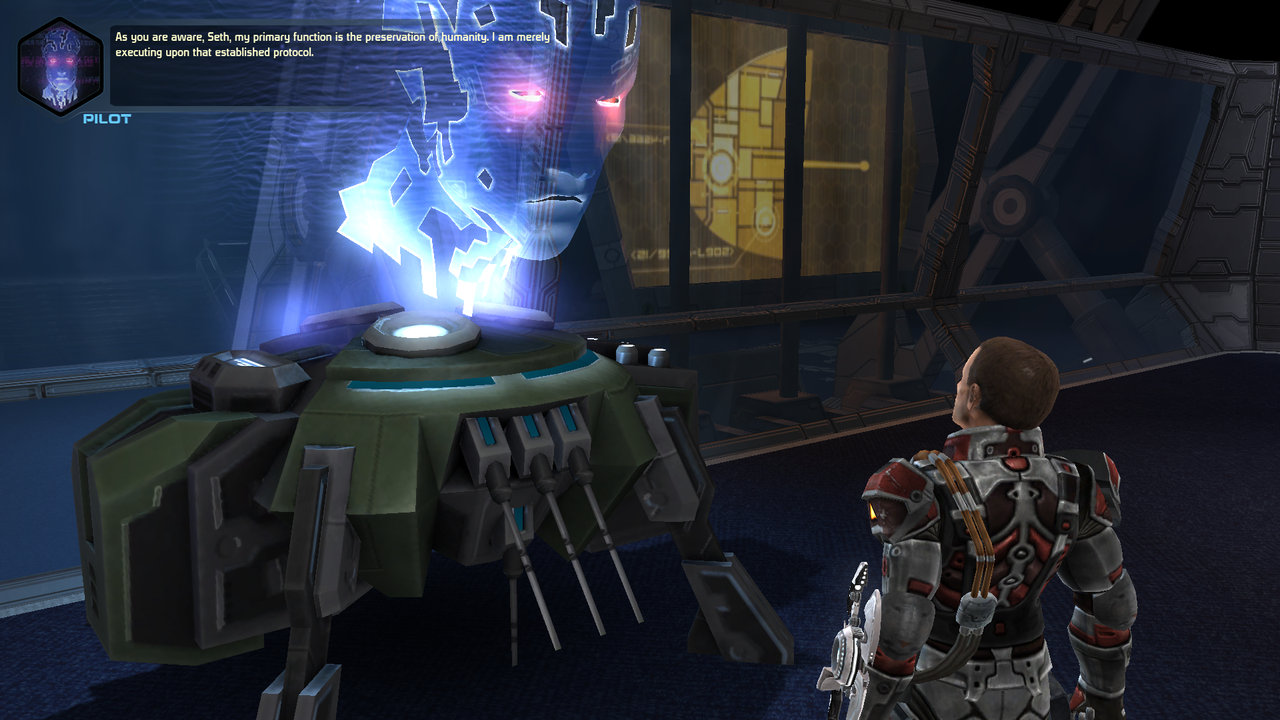
Space Siege
Written by: Rik
Date posted: May 6, 2016
- Genre: RPG
- Developed by: Gas Powered Games
- Published by: SEGA
- Year released: 2008
- Our score: 6
Hello friends. Yes, I am here, in the RPG section. Don’t worry, though, I have done my research. You must gather your party before venturing forth! Under sun and sky Outlander, we greet you warmly! How do you even lay siege to a dungeon anyway? Ok, maybe I just read some of Stoo’s old stuff about RPGs. But here I am anyway, and in return for my contribution, my dear colleague has promised a review of Juiced 3: Big Hot Exhaust Pipes in the very near future.
As the title suggests, and the terrible box art confirms, Space Siege is a spin-off from Gas Powered Games’ Dungeon Siege series, in which I had never been remotely interested, probably because the title contains the word “dungeon” which immediately conjures up associated images of goblins, wizards and beards, which aren’t things that really do it for me. Simply replacing that word with “space” was almost enough on its own: I’ll willingly chow down on any number and combination of tired old sci-fi references and clichés so long as I don’t have to conjure magycks to kill a giant toad. (Which is a good job, in this case, as it turns out.)
But also: when magazines were a thing, and before the internet was on everyone’s phone, circumstances – and I don’t just mean sitting on the toilet, although that is of course one possibility – occasionally forced you to re-read the same issue again and again, eventually paying attention to bits that you weren’t initially drawn to. And at some point, having the same issue of PC Zone to hand in the living room, by the side of the bed, in the bathroom, or on holiday (I can’t remember which) meant that I read the same excitable preview of Space Siege a number of times and became interested enough in it to think, hey, that sounds kind of exciting and awesome: maybe one day I’ll buy and play it and find out.
So, er, anyway, mankind has gone searching in space. This search found little but a single habitable planet, and establishing a colony there incurred the wrath of the local aliens, the Kerak, who sought revenge by attacking Earth. Humans fled in giant spaceships, many of which were destroyed, but yours (the Armstrong) escaped, albeit with a pesky alien presence still on board. As Sergeant Seth Walker, you’re thrown into the thick of the action during an initial prologue level, and you quickly become the main hope for the remaining survivors on the ship. (AND THE REST OF HUMANITY! Etc.)
You are Seth as he has been imagined and written: there are no face sliders here, and he looks how he looks, i.e. a big strong man with a gravelly voice and white skin. There is no party to, er, gather, either: this is largely a solo quest, although you are accompanied by your HR-V unit, a largely mute robot who acts as a fellow combatant. As you progress, you can invest skill points in either combat or engineering (although the two aren’t vastly different), learn new abilities, and obtain and upgrade your weapons and armour. The upgrade system is slightly strange, in that all debris, including alien leftovers, goes into a pot of upgrade materials, which Seth can apparently then convert into something useful at one of the ship’s workbenches (found at every save point, of which there are many). There are materials to be found in crates and toolboxes too, and if you really want you can shoot up every box and computer you see because sometimes that approach bears fruit (even if in principle it does seem a little weird). HR-V can also be upgraded and repaired as you progress.
Control is via mouse and keyboard: movement is performed with a point and click of the left mouse button, and the right button directs your attacks. WSAD is used to rotate and zoom the camera, while the number keys activate your various abilities. You have a level of direct control over HR-V, and these commands are mapped to the function keys. This setup does take a bit of getting used to: most of us who have played a first person shooter are in the habit of using the keyboard to move and the mouse to change where you’re looking, but I found it all worked ok. It’s certainly no worse than a misbehaving third-person camera over which you have no control.
You can evade enemy laser attacks by using the dodge key (‘E’), although you have to aim with the mouse as the same time otherwise you’ll just do a forward roll towards the enemy. HR-V generally just does what he wants but you can temporarily move him out of the way, or get him to return to you, or – a bit later – you can get him to play dead so he doesn’t get blown up during a firefight. (It doesn’t really matter if he does, though: you can get a new HR-V unit at a machine close to each save point.) Weapons need to be selected from a menu using the mouse, although you can preselect two that can be switched between quickly using the Tab key, and this can come in handy if you need to switch from guns to your melee weapon, for example, if a pesky foe decides to rush you.
It’s an action RPG, so you basically run through corridors, blast enemies, upgrade, then rinse and repeat. A tale of aching clicking fingers, as Stoo may have it. There are other friendly characters, but they mainly exist to give you orders or information and, occasionally, comment on what you’re doing. They’re no help at all, basically. And they’re not big on conversation when you try to engage with them between missions, each generally giving you stock responses to the effect that you should stop talking and get on with some blasting.
There is a story though, and in that much-read preview I remember a big thing being made of one particular element, which was the choices you’d have to make regarding cybernetic enhancement. At various points you find cybernetic body parts that you have the option of installing, replacing flesh with machinery. They’ll unquestionably make you stronger, but at a cost to your humanity level, which changes the way other characters react to you. This sounded very interesting at the time, and I envisaged occasional philosophical chats with other crew members about their feelings on the subject, with their attitudes potentially changing as you progressed through the game and made decisions about upgrades.
I don’t know exactly what I had in mind, but I suppose I’d braced myself for something along the lines of Robocop, perhaps, with colleagues unsure of what to make of this combination of human and weapon. Or, from the gaming world, the first few times you visit UNATCO headquarters as JC Denton and experience a range of responses. By the time I realised that there wasn’t going to be much talking at all in Space Siege, I was braced for the fact that there wouldn’t be much weighty plot stuff, but even what’s there is sort of skated over.
For example, when you actually find a cybernetic limb, there’s some discussion about whether you should install it or not, but when you actually come to do so, the decision doesn’t seem to have much weight because you just upgrade yourself at a machine: it’s all done with a click of a button, and there’s no cut-scene. There’s a doctor of cybernetics among the survivors so you think he might be needed to actually perform the surgery, but he isn’t and doesn’t. And generally there isn’t an attitude of hostility towards cybernetic enhancements among the other characters: there seems to be a fairly even mix of views, with only one character being firmly against them. (I don’t want to say much more than that, for the sake of spoilers, but you can see Fuse the weapons with the warrior for more).
Elsewhere, it’s a mish-mash of influences. Seth could almost be Mass Effect‘s default male Shepard, although to be fair, generic gritty sci-fi space soldier blokes do all tend to look alike. Some of the references could be considered paying homage to established sci-fi staples, if you were feeling generous, although it does seem fairly obvious even to me as someone who hasn’t played much of either of the System Shocks, that the story owes plenty – and perhaps more than it should – to those games. Datapads lying around fill in some backstory, some of which is mildly interesting, but it’s all very lightweight.
Still, it’s an action RPG so I guess in a way that’s to be expected. But the action itself also seems pretty lightweight, too, as if designed for a non-RPG fan. Staying completely human is positioned as the hardcore option: it cuts out a lot of the interesting skills and upgrades, but I took the position that I’d wait to use cybernetics until I got completely stuck, which I never did. Upgrading your guns and armour, staying well stocked on health packs and making use of the dodge feature and shield ability seemed to do the trick most of the time. Towards the end I was rewarded for my abstinence with a big humanity-based ability, although I realised later that I had sort of assumed it worked automatically but was actually something that had to be activated and I had effectively been getting by without it. Which I guess isn’t really a great sign.
Tactical use of HR-V is mentioned as a possibility in the manual, but it isn’t necessary and doesn’t seem that workable seeing as he tends to auto-engage with enemies. Occasionally during non-combat bits, he’d forget to get on a lift or start to wander towards an obviously booby-trapped corridor and I’d have to stop him, but generally he can just be left to get on with it.
There’s not much in the way of exploration, and no optional ‘quests’ – you plod to the next objective, choosing to explore the various rooms and corridors along the way as you wish. There’s not much to find, though, with little to pick up except upgrade materials, health packs and the occasional gun. The ship also seems to be littered with lots of explosive barrrels and cylinders for some reason (this is referenced in one or two datapad messages, along the lines of “why are there so many explosive materials? It’s a health hazard!” – but having characters say that something is a bit ridiculous isn’t quite the same as providing an adequate and plausible explanation).
Having said all of that, though…what the hell, I rather liked it. The transposition of a dungeon crawler to the setting of a large spaceship actually works rather well. The atmosphere is creepy and effective, without ever getting into deliberate “scary game” territory with, cheap shocks and frights. Spending the bulk of your time alone, and only maintaining contact with fellow crew members via radio actually makes a lot of sense in the context of the game. I read somewhere that HR-V, as your sole companion, doesn’t have any personality, because he doesn’t talk, but I think it’s perfectly appropriate – preferable, even – that he doesn’t. The action is fairly repetitive but, to an extent, I understand that’s par for the course with such things, and the game is short enough to not outstay its welcome. I even started to feel encouraged that it might be worth trying a Dungeon Siege, or even another more substantial RPG. I’m aware I’ve probably said that before though.
Space Siege was on the receiving end of some fairly smelly reviews when it came out, and Gas Powered Games head honcho Chris Taylor has since admitted that its development was all a little rushed. I have to say, as someone coming to it with no prior knowledge of Dungeon Siege, it doesn’t feel like it’s been rushed: perhaps a little undercooked, with a few underdeveloped ideas, maybe. And, for the sake of balance, I must also point out that Stoo had previously dismissed it as “a bit bland” and so it probably isn’t one for experienced RPGers. It certainly doesn’t have enough depth to justify multiple play-throughs from the start, but you might be interested enough in the different possible endings that you’ll be prepared to play through the final stages more than once.
So maybe Space Siege isn’t for everyone, and it isn’t exactly what was promised, but it still manages to deliver a few hours of solid, undemanding fun. Also: how do you even lay siege to space anyway? [You’re fired – Ed.]

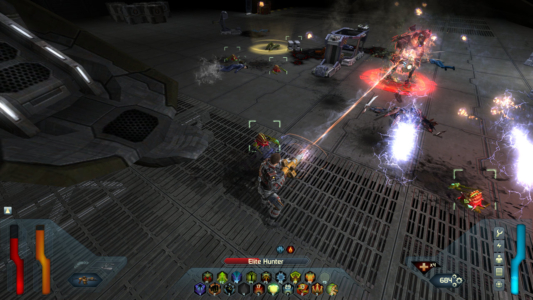
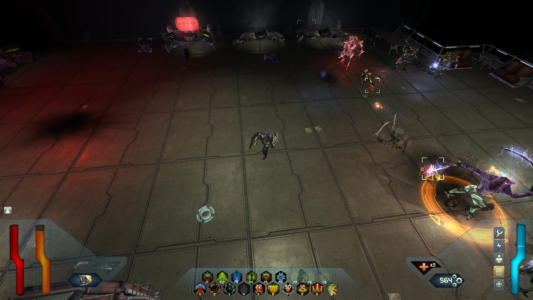
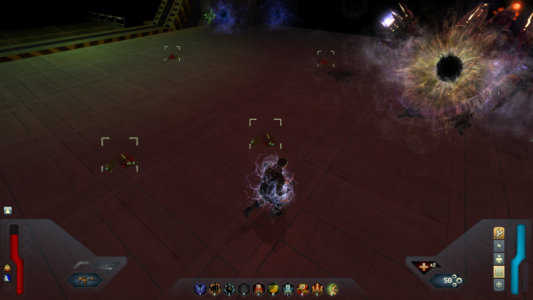
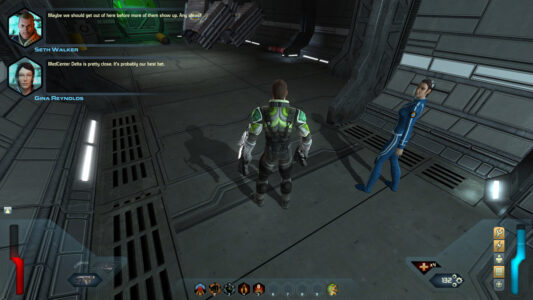
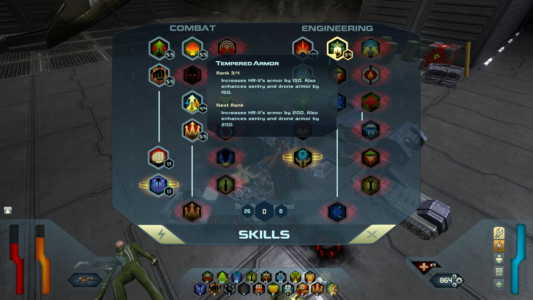
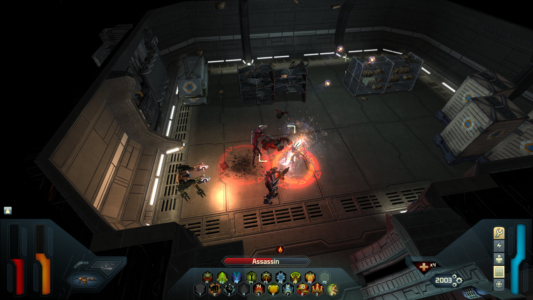

 Posts
Posts